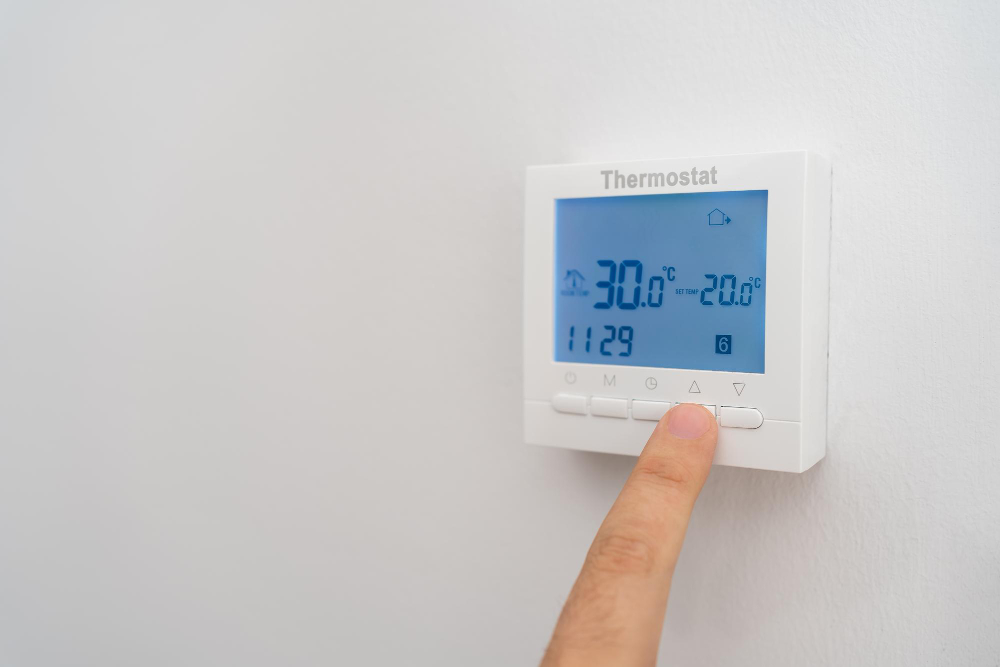Thermostat Programming Tips to Save Money and Energy

Have you ever noticed that some days your home feels uncomfortably warm or cold, even though your thermostat is set to a comfortable temperature? The problem might not be with your HVAC system - but with the way you're using your thermostat. Many homeowners overlook the importance of programming their thermostat correctly. However, with some simple adjustments and careful programming, you can lower your energy bills, increase your comfort, and reduce wear and tear on your HVAC system. In this blog post, we'll share some tips to help you get the most out of your thermostat.
1. Choose the Right Thermostat for Your Home
One of the first steps in optimizing your thermostat is selecting the right model for your home. There are many different types of thermostats available, ranging from basic models with minimal features to smart thermostats that can learn your preferences and automate your home's temperature control. Consider the size of your home, your HVAC system, and your personal preferences when choosing a thermostat. Don't forget to check for rebates or incentives from your utility company when upgrading your thermostat!
2. Set Your Thermostat for Optimal Comfort and Efficiency
Once you've installed your thermostat, it's time to start programming it. This is where many homeowners struggle, as the settings can feel overwhelming or confusing. However, by taking the time to program your thermostat correctly, you can create an ideal balance between energy efficiency and comfort. The U.S. Department of Energy recommends setting your thermostat to 78 degrees Fahrenheit when you're at home and need cooling, and raising it to 85 degrees Fahrenheit when you're away or sleeping. For heating, set your thermostat to 68 degrees Fahrenheit when you're awake and lower it by a few degrees when you're asleep or away.
3. Use a Programmable Thermostat for Maximum Savings
If you're still using an old, non-programmable thermostat, you're leaving money on the table. By upgrading to a programmable thermostat, you can set your HVAC system to run less frequently when you're away from home, saving energy and money. You can also set your thermostat to automatically adjust based on your preferences. For example, if you typically lower the temperature at night for sleeping, a programmable thermostat can handle that for you without requiring manual adjustments.
4. Fine-Tune Your Temperature Preferences
Not everyone's temperature preferences are the same, and even small adjustments in temperature can make a big difference in your comfort levels. Consider experimenting with different temperature settings to find the one that works best for you and your family. You might also consider using a zoning system or smart vents to direct heating or cooling to specific areas of your home, rather than trying to maintain a uniform temperature throughout the house.
5. Regularly Maintain Your Thermostat and HVAC System
Even the best thermostat won't perform well if your HVAC system is in disrepair. Be sure to schedule regular maintenance appointments for your HVAC system to ensure it's running efficiently and any problems are addressed. Additionally, check your thermostat's batteries periodically and replace them if necessary. Dust or debris on the thermostat or around the air filter can also impact performance, so be sure to clean any build-up as needed.
Conclusion
Your thermostat may seem simple, but it can have a big impact on your comfort and energy bills. By selecting the right thermostat, programming it correctly, using a programmable thermostat, fine-tuning your preferences, and maintaining your thermostat and HVAC system, you can optimize your home's temperature control. If you're looking for a hvac supplier in Florida, contact Discount Air Supply today to learn more about our HVAC services and products.